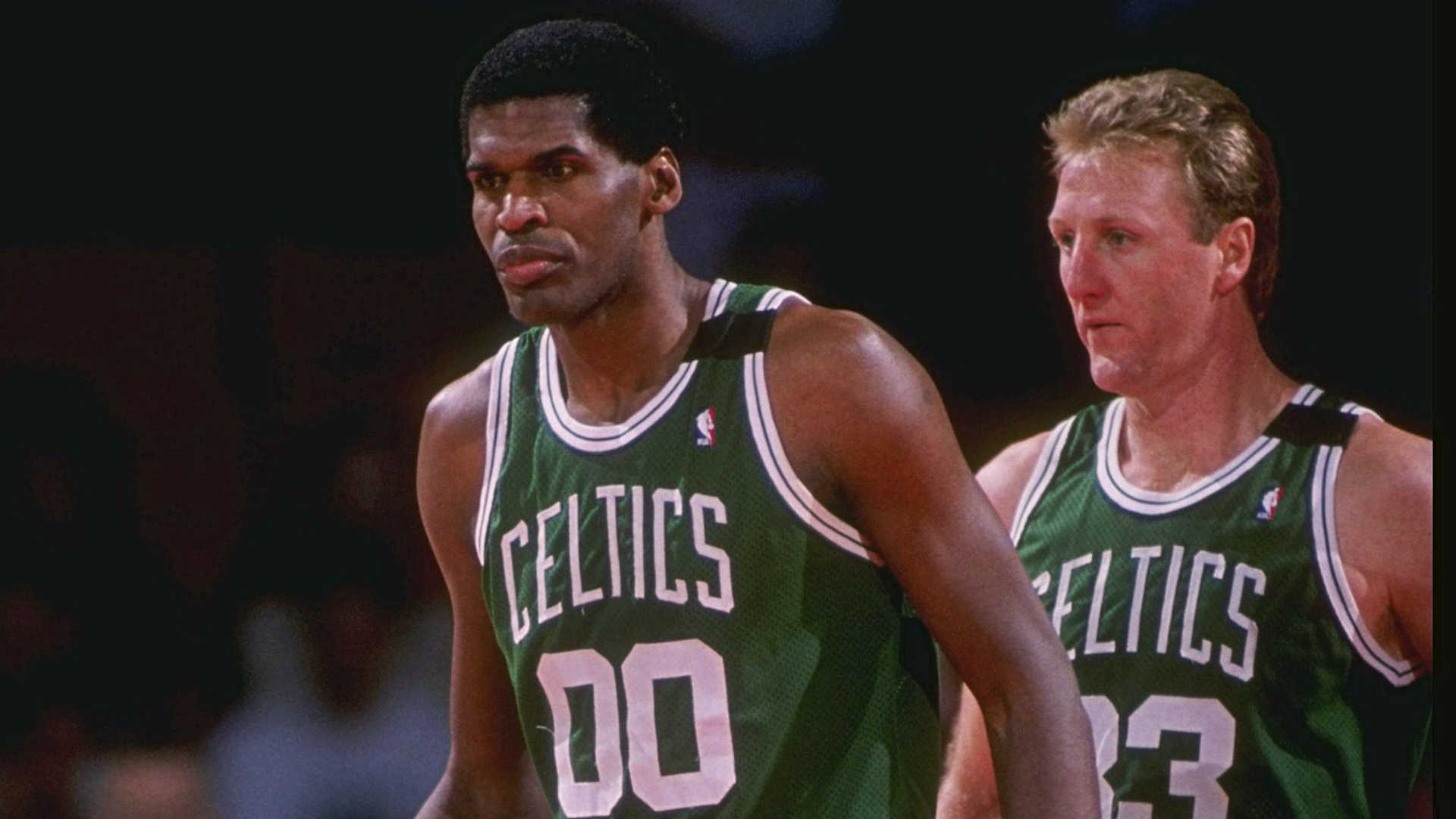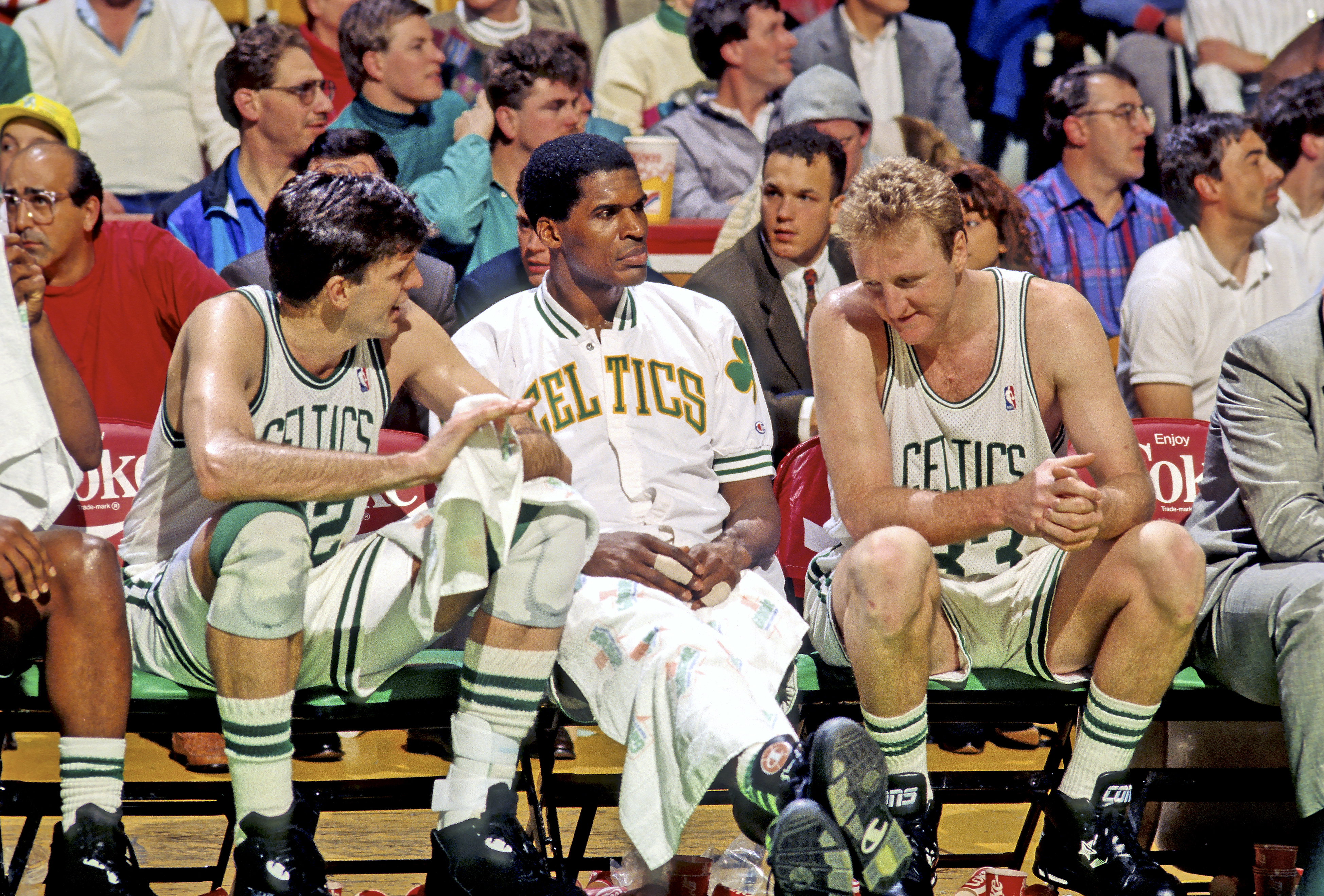The NBA celebrates NBA 75 roster players almost daily from now until the end of the season. Today’s honoree is Celtics star Robert Parish, who began his career with the Warriors. This column on Parish from the legendary Art Spander originally appeared in the January 14, 1978 issue of The Sporting News.
OAKLAND – He likes suspenders, the number 00, jumping rainbow shots, and lounging around his room doing a lot of what the digits on his uniform add up to. You don’t like large crowds, silly questions, constant travel, and personal misconduct.
But that synopsis hardly does justice to Robert Parish, the man who will not forget the 1976 professional basketball draft, and may not let the experts forget him either.
Parish is a 7-0 center, now for the Golden State Warriors, but a couple of seasons ago with Centenary College in his hometown of Shreveport, Louisiana, he was part of the Pan Am Games team. He was part of THE SPORTING NEWS All-America team. He was led to believe that he would be the first man selected when the clubs of the National Basketball Association sat down to dish out the talent.
When there’s a good big man available, they say, you take him. Big men control basketball.
“People told me it was going to be the first pick,” Parish recalls. That thrilled the students and alumni of Woodlawn High in Shreveport.
Terry Bradshaw, another Woodlawn graduate, was the first man chosen in an NFL draft. Now the school would have the first man selected in the NBA draft.
What do they say about the best laid plans? The Atlanta Hawks, who were going to draft first, grew cold or depressed. They traded the top pick to Houston, which took Maryland guard John Lucas. The Chicago Bulls were already engaged to Scott May. The Kansas City Kings took Richard Washington. The next thing that was known was that the eighth election was being made and Robert Parish was still available. Then, almost stunned by his good luck, the Warriors announced that it was theirs. Well, Woodlawn High now had a number one pick and a number eight pick.
“I don’t think not being number one has affected me,” Parish said. “I just wanted to get into professional basketball because I knew what I could do. People had hit me. I was from a small school. They said I hadn’t played against any real centers.
“Who plays in college against centers? Kent Benson (this year’s top pick) didn’t play a lot of centers. Same with Bill Walton. A lot of the guys they played against were really forwards.”
And Parish was a mystery. After Centenary recruited him, he was treated like Red China in an earlier era. According to the NCAA, it ceased to exist. Not only was Centenary put to the test for the millennium, but none of its basketball stats were allowed to be included in the national compilation. If they had, Robert Parish would have been the top rebounder in the country.
“Some people doubted he could play in the NBA,” Parish reflected. “They said I didn’t have the right attitude, I didn’t have enthusiasm. I’m just not a rah-rah guy, I’m not emotional. I go out and try to get the job done, be a kind of solid, silent leader.”
He’s done the job for the Warriors, not only substituting for starting center Cliff Ray, but also working as a forward when Golden State coach Al Attles wants rebounding and strength.
In last year’s playoffs, when the 6-9 Lightning, bothered by a bad foot, proved ineffective against Los Angeles’ Kareem Abdul-Jabbar, Parish kept the Warriors in game after game with his shots blocked and his shot on target. jump.
He prefers to be called Robert, but his nickname is “Bob-a-Dob”, which Parish apparently tolerates.
Robert and the organization thought his playoff performance would send him into this season. But a stomach disorder he contracted during a summer trip to Mexico caused him to take several steps back.
“I just didn’t feel good,” Parish said.
Obviously, it never feels right to be carried around with that modern device known as the belt. Except on rare occasions, Robert avoids wearing suspenders or, if he prefers, suspenders.
“It hits me,” Parish said. “You don’t see a lot of young people wearing them. But I’m more comfortable. I don’t like anything tight around my waist.”
For a long time, the element that caused him the most discomfort was the human race. It can be financially and psychologically rewarding to be 7-0 when you’re a senior in college and can throw 15-foot jump shots, but it’s not much fun to be different when you’re younger.
“Children can be very critical,” Parish said. “I guess my height started to show when I was in sixth grade.
“He was about 6-4 or 6-5. In high school, he was way above the rest. He had feet twice the size of everyone else.
“At first, I didn’t like being big. My peer groups put a lot of pressure on me and I became very aware of my height. But when I was in my third year of high school, everyone saw that I was going to be one of the best players in the world. basketball, they became positive. “
Parish is positive about the San Francisco Bay Area. He lives in an apartment complex in Hayward, an Oakland suburb, where he listens to records and basically keeps to himself. Occasionally he goes out at night with Ray or Sonny Parker, another second-year Warrior player, who lives in the same compound.
“The Bay Area is much more open than Louisiana,” Parish said. “We have more racism there, even now. In the Bay Area, they don’t care who you’re with. But in Shreveport, if you date someone who’s not your own color, they look at you seriously.”
People look at Robert Parish for a variety of reasons, mainly because he is tall. He’s been asked hundreds of times if he’s actually 7-0 or if he’s a basketball player or what the weather’s been there.
“Some of those questions are not bad,” he said. “Others are totally outrageous. I just walk away.”
Now, if only a few of his interrogators did the same, Parish could get to work making the teams that left him in the draft feel like a great Double Zero.


